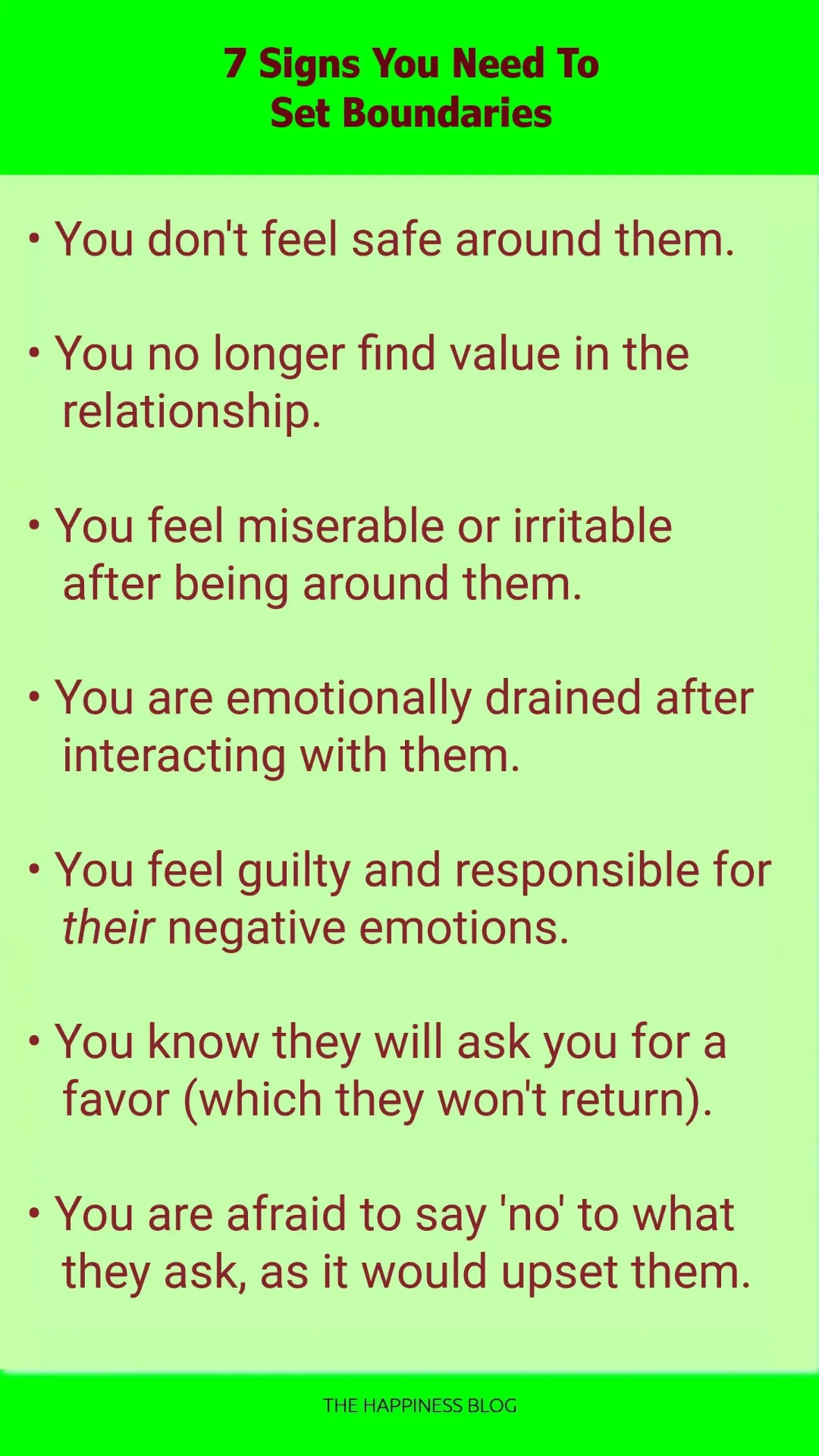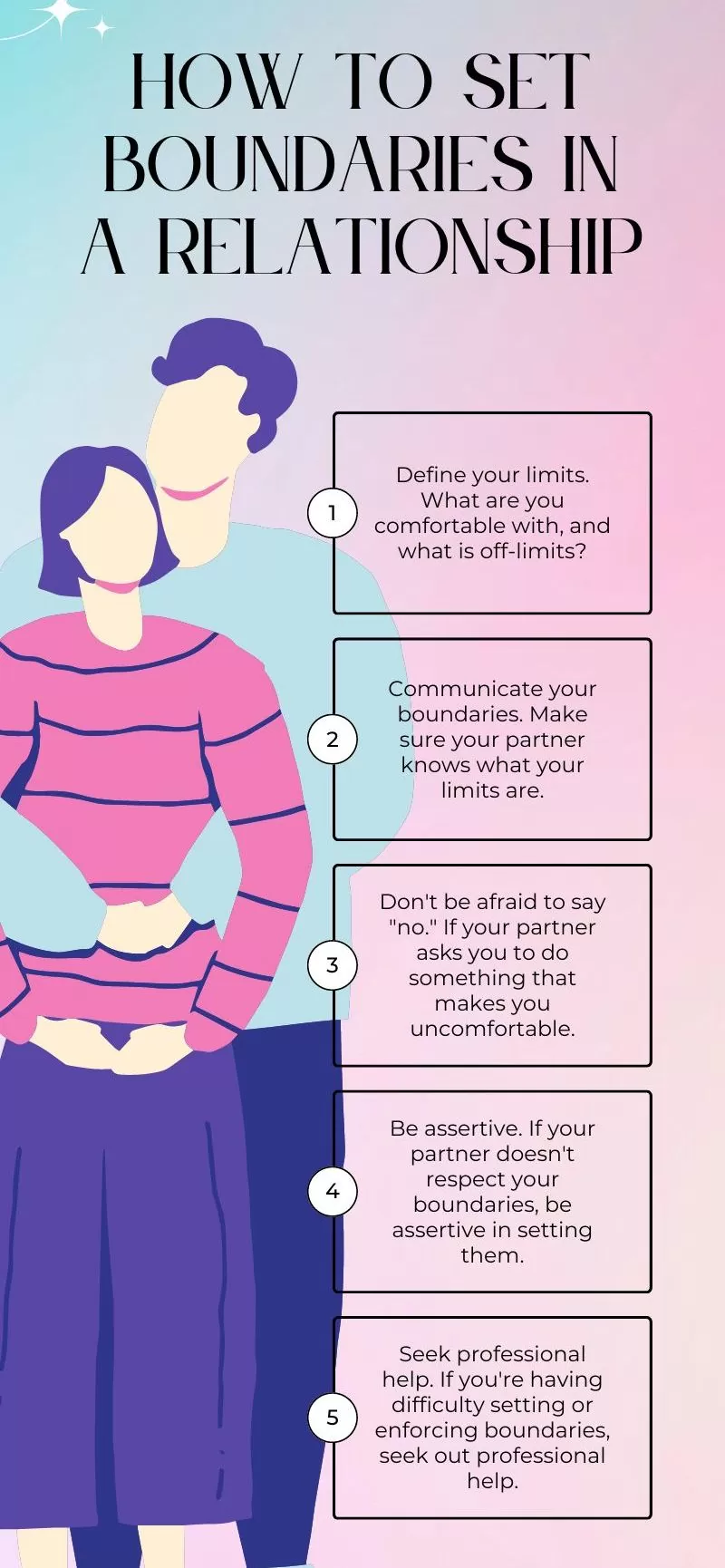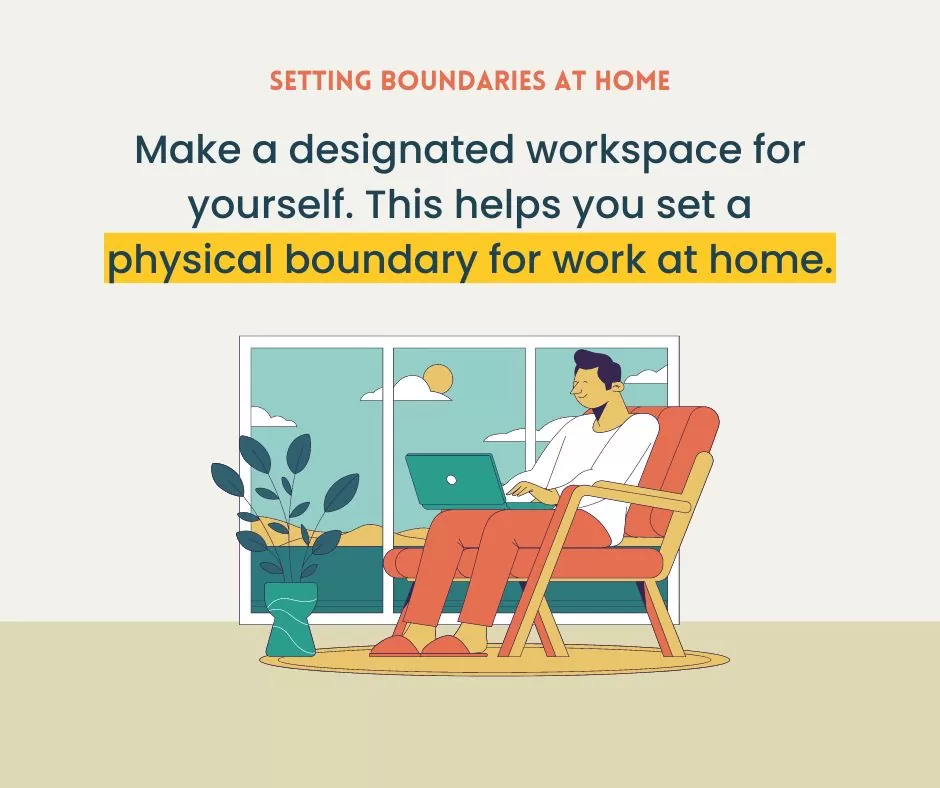Today's Thursday • 9 mins read
Good relationships have good boundaries. Bad ones have none.
Good boundaries don’t just make it easier to resolve your disputes, they also help you love and grow together.
- Your boundaries safeguard your safety, dignity, and freedom. They make your relationships vibrant and easy-going.
- Porous or absent boundaries ruin your peace, confidence, and independence. They let the other person use you for their personal gain.
Personal story:
When I was in medical school, I lived in an all-boys hostel.
Now, there was one dude who would routinely wake up and walk into other people’s rooms to chat, while sitting on their beds — with nothing on!
We all hated his disregard for hygiene, but we didn’t report it to the hostel warden, since he was otherwise a great person.
Our solution: We forced him to carry a towel to sit on. That was our boundary.
How To Set Healthy Boundaries In A Relationship
These are the steps to set good boundaries with your family, friends, colleagues, and acquaintances.
1. Spot The Unhealthy Boundaries.
First, you need to accept that some of your relations are toxic. They might have been good in the past, but now they make you sick and tense.
How do you know when you need to establish boundaries in your relationships?
These are the seven most urgent signs:

Bad boundaries in personal relationships let others treat you unfairly, blame you for their actions, or make you do things you don’t want to.
At work, your leaky boundaries can let others disrupt your workflow, pile your desk with work, and criticize you without giving you constructive ideas.
- Unhealthy boundaries can limit your well-being and growth.
- They can eat away your self-respect, self-worth, and sense of freedom.
- They allow unrealistic expectations from others on your resources and time.
- Poor boundaries can allow others to use your services without paying you anything.
- They often blur the lines between your needs, desires, and wants, leading to mental fatigue.
Tip: If you notice that your boundaries are no longer what they used to be, feel free to add new restrictions, relax old conditions, or redefine some boundaries.
Healthy vs. Unhealthy Boundaries
Signs of Healthy boundaries:
- You feel free to have friends and interests outside of your relationship.
- You take care of your own happiness, not just expecting your partner to make you happy.
- You can talk openly and honestly, respect that your partner is different from you, and are able to say what you want clearly.
- If a relationship ends, you feel it’s okay to move on.
Signs of Unhealthy boundaries:
- You can’t freely express what you need.
- They feel jealous and/or envious much of the time.
- You feel like you can’t be happy without your partner.
- Your partner plays mind games instead of talking straight.
- They blame you for their bad actions, situations, or emotions.
- It’s difficult to let go when a relationship is over.

Q. How to set boundaries with toxic friends?
A. Stay away from them. You don’t need a friend who doesn’t respect your boundaries.
- It is always your choice to shape your boundaries as you see fit, even if others expect otherwise.
- Do not ask others to set your boundaries. Don’t seek permission before setting boundaries with someone.
- Keep some room to negotiate around certain people’s needs before setting new boundaries, such as your family and your employer.
2. Discuss The Benefits of Boundaries.
Have a two-way discussion about the benefits of boundaries. It can help them understand and accept your boundaries better.
- Physical boundaries help you stay safe and relaxed.
- Intimacy boundaries call for consent before any intimate gesture.
- Material boundaries mark out who can ask you for your belongings and money.
- Time boundaries tell others that you are focused on your work and do not want to be distracted.
- Emotional boundaries urge others to heed your well-being and avoid anything that may agitate you.
Overall, boundaries help build long-term, successful relationships, which you are proud to be in rather than feeling constricted or unhappy.
- Boundaries help prevent unnecessary disputes in the relationship.
- Healthy boundaries can lead to more trust, tolerance, and intimacy.
- They can improve communication and understanding between people in the relationship.
- They can help establish a sense of respect and autonomy for both people in the relationship.
- They allow you to feel more in control of your own life, current actions, and future aspirations.
- Boundaries can also foster a sense of safety and security, and make the relationship more resilient.
- They give you a healthy personal balance rather than feelings of being overwhelmed or undervalued.
Tip: Boundaries are about you — what limits you will allow. It’s not about how others should behave in your presence.
Q. How do you set your emotional boundary?
A. By deciding how you’ll allow others to treat you.
Setting healthy boundaries means:
- accepting full responsibility for your own behaviors and emotions, while
- refusing to take accountability for other people’s actions or feelings.
3. Assert Your Relationship Needs.
Before setting boundaries, make two lists: one of your relationship expectations, and the other of your life goals and priorities. Then, find the point of balance between your expectations and priorities.
“Boundary: a limit that promotes integrity.” — Anne Katherine
Be open and honest about your needs, expectations, and frustrations. Keep your communication open, friendly, and peaceful.
- Be clear about what you need and desire, and what you won’t be comfortable with.
- Stay willing to listen and accept if your partner has different opinions on your boundaries.
- Keep an open mind to negotiate somewhat to achieve a balance that works for both of you.
- As you lay your boundaries, remain open to hearing your partner’s needs and boundaries as well.
- Be empathetic if they don’t know about relationship boundaries — they might have grown up in a family where there were no boundaries.
Tip: Boundaries need to be modified and maintained. Never feel ashamed to reiterate your boundaries.
4. Set Your Boundaries With Them.
Everyone, whether in a relationship or not, needs “me-time” on a regular basis. Personal space is a non-negotiable in any relationship.
- Define Your Boundaries: Tell your partner what they are allowed to do with you, what actions they need your permission for, and what behaviors you will not tolerate. Make sure they understand and agree to these boundaries.
- Share Your Need for Space: Stress your need for personal space. Be specific, say, two hours each day when you won’t be disturbed (unless it’s an emergency). Or, two days a month to spend with friends or go on a solo trip once a year. Explain that this time alone is vital for your well-being, as it lets you engage in the relationship more fully.
- Share Your Solo Activities: Share your list of solo activities with your partner. So they know you are out taking a walk, reading a book in the attic, or exercising at the gym. Share your solo trip details, including when you will call them, and what times they can call.
- Take Breaks From Talking: Don’t hesitate to take a break from constant chatting. It’s perfectly fine to enjoy some quiet time together or apart. Sometimes, just being in the same room without talking can be really refreshing.
- Set “Tech” Boundaries: Talk about how you want to handle technology in your relationship. Maybe agree to put your phones away during meals, or limit social media time. This will help you focus on each other and strengthen your connection.
Seek professional help if you are having trouble setting boundaries in your relationship.
Tip: Setting boundaries is about using “I” statements to express your limits and needs, not about controlling or blaming the other person.
“Good fences make good neighbors.”
— Robert Frost
5. Say “No” When You Want To.
Tip: Learning to say “No” without being rude is a key skill in boundary setting.
We often struggle to say ‘no’ to friends and family for fear of offending them, even when we know it hurts us.
Here are some tips on saying No:
- Refuse offers, requests, demands that you aren’t comfortable with or willing to do.
- It gets easier to say “no” when you have practiced it a few times.
- Your “no” does not need to be explained or qualified.
- Use “I” statements to express your reluctance.
- Don’t get aggressive, sarcastic, or abusive.
- If you can’t say no right away, postpone.
As a rule, don’t hesitate to say No to activities or situations that you find awkward, disgusting, or illegal.
“Your colleagues are not your family, and your company is not your home. A no at work can mean yes to your real loved ones.”
6. Best Practices For Setting Boundaries.
Bitter Truth: You can’t get too far in a relationship with one-sided boundaries.
Don’t make people follow your rules just because you have power over them. Don’t trample over their boundaries, simply because they can’t retaliate. It makes you into a dictator in the relationship, not an equal partner.
Some best practices for setting boundaries:
- Avoid favoritism in relationships.
- Be intentional, clear, precise, and direct.
- Don’t allow emotions to cloud your decisions.
- Always stay respectful and non-confrontational.
- Be assertive — use powerful words rather than passive sentences.
- Use “I” statements, but do not ignore their “I” or “You” statements.
- Only set boundaries that make you feel comfortable and not regretful.
- Use active listening skills to fully understand your partner’s perspective and needs.
- Don’t use ultimatums or threats to end the relationship as a means of setting boundaries.
Tell people politely and clearly when they violate your boundaries.

Recommended book: Boundaries: Where You End and I Begin – How to Recognize and Set Healthy Boundaries by Anne Katherine.
“If someone you don’t trust stands too close to you, move to a distance that feels safer.”
— Anne Katherine
What are the 4 steps to setting healthy boundaries?
1. Identification: Identify your physical, emotional, mental, spiritual, material, time, and energy needs.
2. Communication: Communicate your boundaries clearly, directly, and courteously. Send a written memo, if required.
3. Enforcement: Enforce your boundaries after you have communicated them.
4. Re-evaluation: Re-evaluate your boundaries as your needs and situation change over time, and adjust them. Boundaries are meaningless unless maintained.
Final Words
Three tips to avoid being interrupted while doing something private, like meditation or dealing with your worries:
- Put a Do-Not-Disturb sign on your door that specifies the time you wish to be alone.
- Message your alone-times ahead of time so they are well aware of your unavailability.
- Create a dedicated space for your solo pursuits, so that others can find you in an emergency.

√ Also Read: 25 No-Fluff Tips for Digital Minimalism
√ Please spread the word if you found this helpful.
• Our Story!
» You deserve happiness! Choosing therapy could be your best decision.
...
• Disclosure: Buying via our links earns us a small commission.